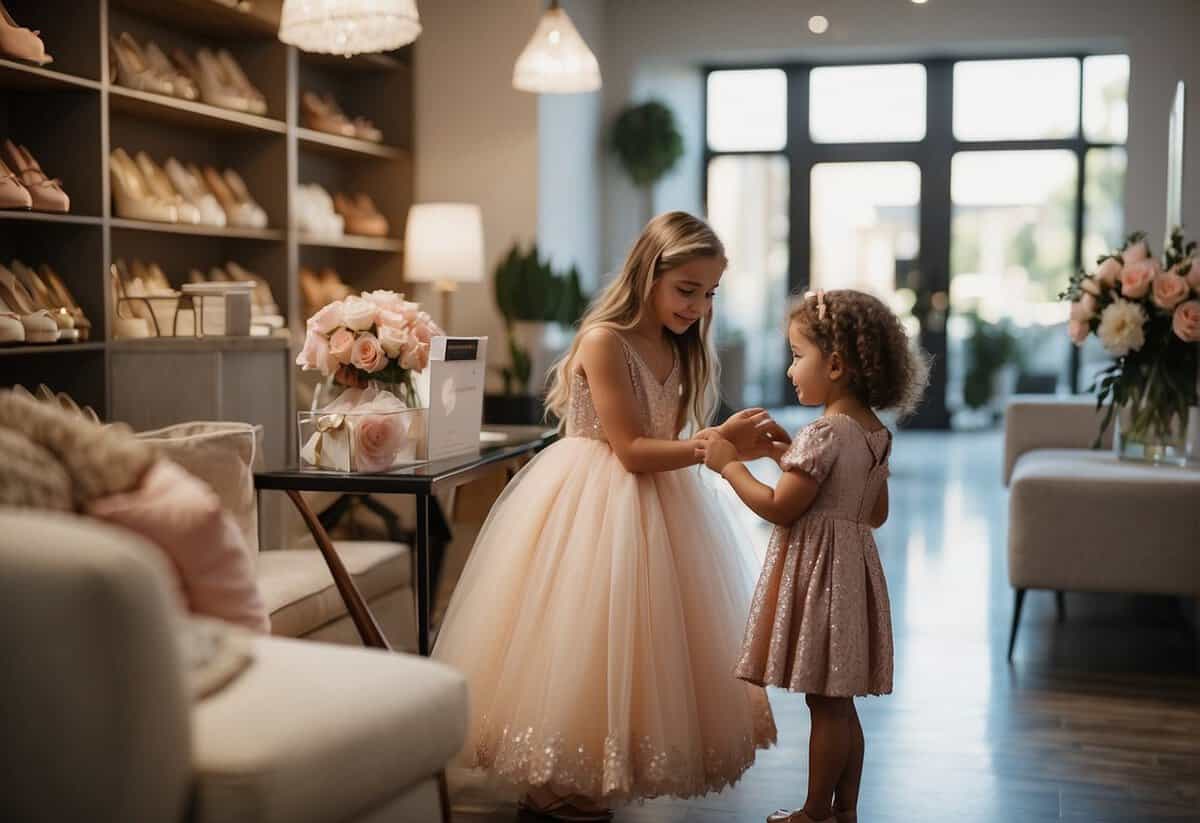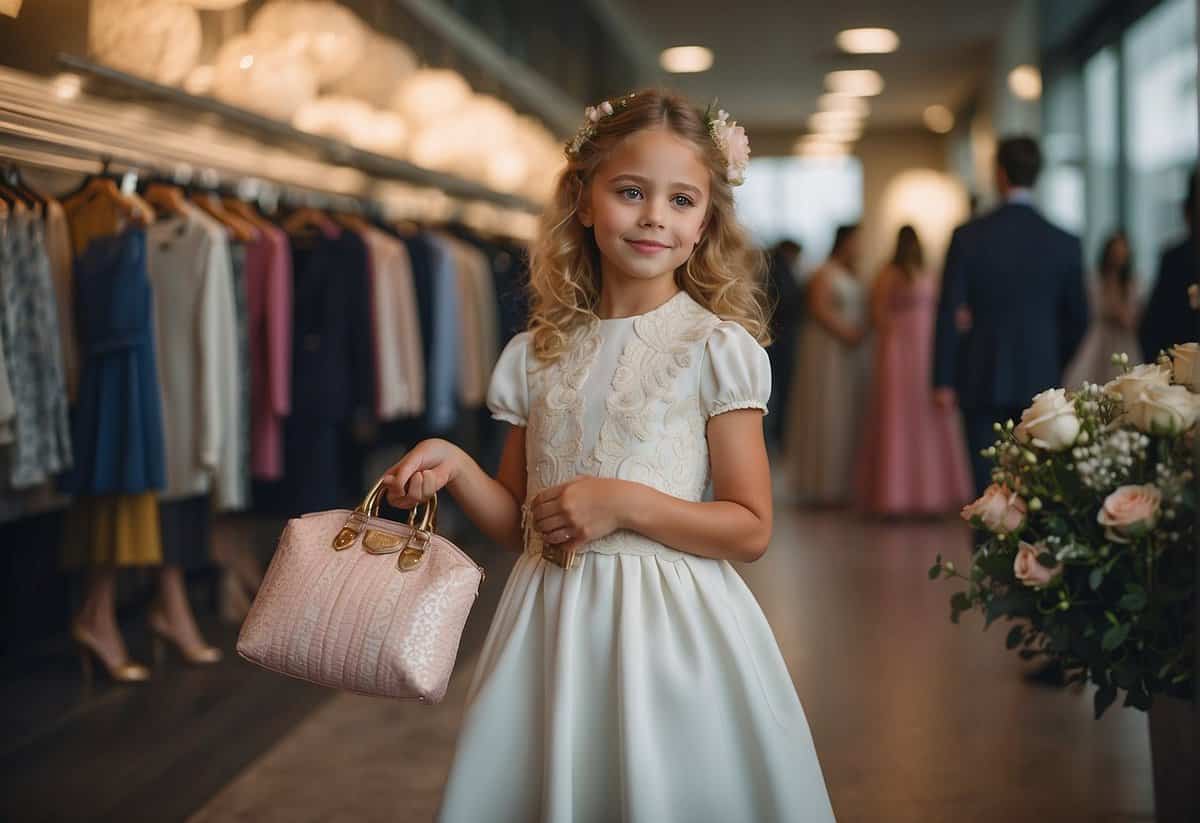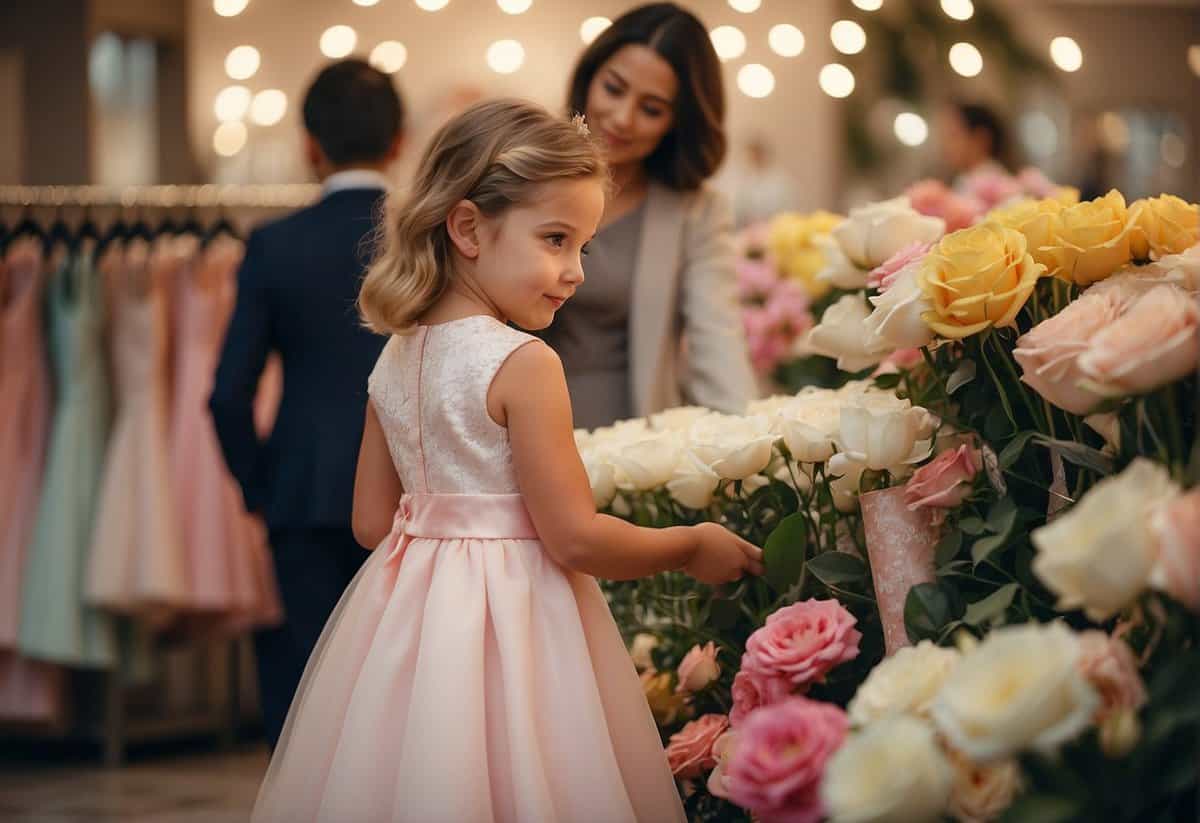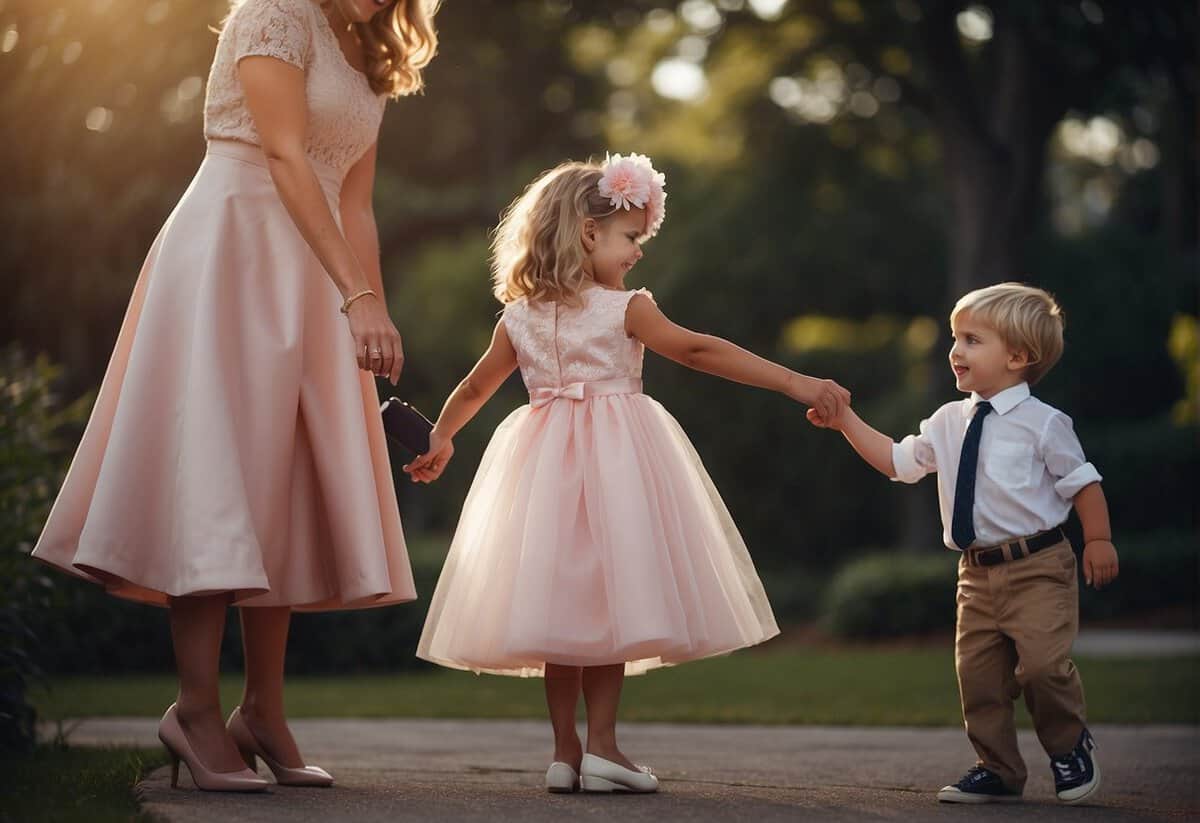Who Pays for a Flower Girl Dress? Understanding Wedding Attire Costs
Choosing the perfect flower girl dress is one of many delightful aspects of wedding planning. Traditionally, the flower girl’s role is to precede the bride down the aisle, often sprinkling petals to herald the bride’s entrance, which adds a charming touch to the ceremony. As such, her attire is a small yet significant element that contributes to the overall aesthetic of the wedding.

When it comes to purchasing the flower girl dress, it’s generally expected that the parents will cover the cost. However, it’s not uncommon for the couple getting married to either pay for the dress or assist with the expenses, particularly if they have specific attire in mind. This allows for flexibility in financial etiquette, ensuring that the choice of the flower girl’s dress aligns with both the vision of the wedding and the financial preferences or restraints of the parties involved.
Financial understanding and clear communication between the couple and the parents of the flower girl are essential to outfit the flower girl in a way that suits the wedding’s theme while also respecting everyone’s budget.
Key Takeaways
- The flower girl’s dress enhances the wedding procession and should complement the theme of the wedding.
- Parents traditionally pay for their child’s flower girl dress, though costs can also be shared with or covered by the couple.
- Open discussion about the dress and its cost helps ensure that the dress choice is considerate of all parties’ budgets.
The Role of the Flower Girl

In the beautiful tradition of weddings, the flower girl has a special part to play that adds innocence and joy to your ceremony. Her role, while simple, carries symbolic meaning and delights the guests as part of the wedding procession.
Tradition and Duties
The flower girl is often a young female who precedes the bride as she walks down the aisle, scattering petals from her basket to symbolize hope and the start of new beginnings. Her presence is a nod to tradition, generally following the ring bearer if one is part of the procession. The role of the flower girl is not merely about adorning the aisle; she represents purity and the passing on of customs.
Age and Selection
Typically, a flower girl is chosen between the ages of 2 and 8. Your choice should be someone who can handle the very important task of walking down the aisle, often in front of a large group of people, without getting too nervous. It is also usual for her to carry a basket filled with petals, which she scatters to bring joy and hope to the ceremony. The right candidate will understand her role and feel special for being part of your big day.
Outfitting the Flower Girl

When dressing a flower girl for the big day, consider style, comfort, and the wedding theme to ensure a seamless fit with the bridal party. Remember, the flower girl’s parents typically pay for her dress, though there are times when you as the couple might take on this cost.
Choosing the Right Dress
When selecting the flower girl dress, focus on dresses that echo the overall style of the wedding. If the bridesmaids are wearing pastel chiffon, a tulle flower girl dress of a similar hue can create visual harmony. Ball gown styles add a touch of beauty and grace, making them perfect for formal affairs. Keep in mind that the color should typically match or complement the wedding’s color scheme.
Accessories and Completing the Look
Accessories serve to complete the flower girl’s ensemble. Choices might include a delicate hair wreath for an outdoor wedding or shiny tights for added polish during colder months. Choosing accessories that align with the rest of the bridal party ensures consistency and can make your flower girl feel like a vital part of the event. Remember to keep the accessories age-appropriate and comfortable for your littlest attendant.
Comfort and Practicality
Comfort is paramount, especially since flower girls are often young and may find it hard to cope with restrictive or itchy outfits. Look for dresses in soft, breathable fabrics, and ensure a proper fit that allows for movement. Shoes should be comfortable enough for walking down the aisle and dancing afterwards, so definitely avoid overly high heels or stiff new shoes that could pinch. Prioritizing comfort will help keep those adorable smiles coming all day.
Financial Etiquette

When it comes to the nuances of a wedding, understanding who takes on financial responsibilities is key, particularly concerning the attire of the bridal party, which includes the flower girl’s dress.
Who Covers the Cost?
Traditionally, it’s the parents of the flower girl who pay for her dress. However, modern practices are more flexible, with some couples opting to contribute to or cover the cost as a gift. It’s important to communicate early to set clear expectations with all involved parties.
- Bride and Groom: May decide to purchase the dress as a kind gesture.
- Parents: Typically bear the responsibility unless otherwise agreed upon.
In some instances, if the bride has a specific vision that may be cost-prohibitive, she may offer to pay for the dress or look for cost-effective solutions.
Budget Considerations and Options
While planning your wedding budget, it’s vital to consider the costs of the flower girl dress and discuss openly with the parents about who will purchase the attire. Here are some options:
- Affordable Dresses: If parents are paying, aim for dresses under $100 to keep their costs manageable.
- Shared Cost: The bride and groom can split the cost with the parents.
- Bridal Party Support: Sometimes, other members of the bridal party might chip in as a collaborative gift.
It’s considerate for the couple to order a dress within a reasonable range if they are not covering the cost. Remember, open discussions and early planning can ensure that the flower girl’s dress is a delight, not a dilemma.
Additional Considerations

When planning for your wedding party’s attire, remember that details like the wedding theme and venue have significant influence on many aspects, including the flower girl dress. These elements should align harmoniously, ensuring the flower girl complements your overall aesthetic and setting.
Wedding Theme and Venue
Your wedding theme often sets the tone for the entire event. If you’re hosting a traditional reception, you might want your flower girl’s dress to echo the elegance of the venue with classic fabrics like satin or silk. For a garden-themed wedding, consider a dress with floral accents to match the bride‘s nature-inspired details.
The venue itself can impact the attire choice as well. A beach wedding calls for lighter, airier fabrics that won’t weigh the flower girl down. Meanwhile, a grand ballroom might inspire a more formal gown that rises to the occasion of your upscale setting. Keep in mind the flowers and decorations when selecting the dress; they can be a great source of inspiration and should complement the dress to maintain a cohesive look.
In modern weddings, there’s often a blend of convention with personal flair, giving you the freedom to ensure the flower girl’s attire is both appropriate for the setting and a reflection of your personal taste. Remember, your venue and wedding theme provide the backdrop to all the beautiful details of your day, including your littlest attendant’s ensemble.
Frequently Asked Questions

When planning for a wedding, understanding the financial etiquette around a flower girl’s dress is crucial for smooth preparation. Let’s explore the common questions regarding this expense.
What is the usual etiquette for purchasing a flower girl’s dress?
Typically, the parents of the flower girl cover the cost of her dress. However, each wedding can approach this differently, and some couples opt to pay for the attire or share the cost.
Is it the bride’s responsibility to pay for the flower girl dress?
While traditionally the flower girl’s parents are expected to pay, modern weddings are flexible, and the bride may choose to cover the cost as a gift or part of her wedding budget.
How can one decide on a budget for a flower girl dress?
Your budget should take into account the overall wedding style and how much you’re willing to allocate for the flower girl’s attire. Dresses can range significantly in price, so setting a budget early is key.
Should parents expect to cover the cost of their child’s flower girl attire?
Yes, in most cases, the parents should plan to pay for their child’s flower girl dress, unless other arrangements have been made with the couple.
When is the right time to start shopping for flower girl dresses?
You should start looking for a flower girl dress several months before the wedding to ensure enough time for fitting and any necessary alterations.
Are there alternatives to purchasing a flower girl dress outright?
Yes, renting a flower girl dress is a viable and often more cost-effective alternative, especially if the dress will only be worn once.



